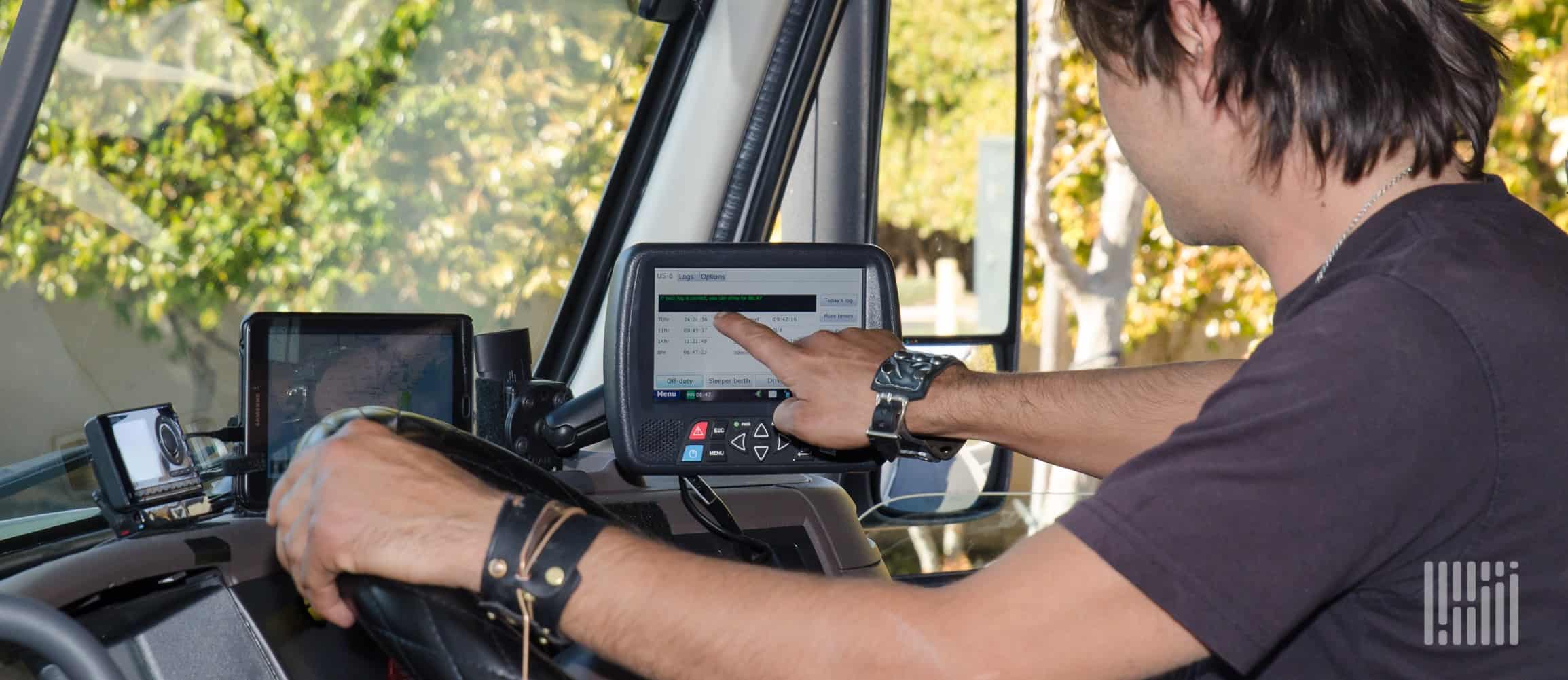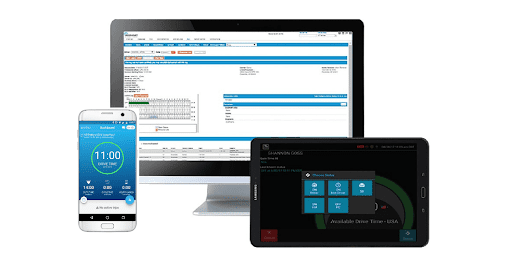The electronic logging device mandate requires commercial truckers and carriers such as bus drivers to use an approved, registered ELD in their vehicles. These devices rely on GPS and other technologies to digitally log exact times, routes, and hours-of-service during operation.
Drivers may be tempted to unplug their ELD. This may be in instances of legal off-time driving (personal conveyance) or, contrary to regulations, to put in a few off-the-record delivery miles. But it is never a good idea to unplug your ELD. Continue reading to learn what happens when you take such action, who will find out, and the likely consequences.
And when you’re finished, check out the other articles in our ‘All about ELDs’ series:
- What is the ELD Mandate?
- What happens if you unplug your ELD?
- ELD exemptions: What you need to know
- 6 best trucker ELD providers
ELDs: The Basics
The recent ELD mandate applies to commercial drivers and carriers who are required to keep records of duty service. Although some ELD mandate exemptions exist, the mandate covers most commercial drivers, and noncompliance can result in severe penalties.
The purpose of the electronic device is to increase safety by providing more accurate monitoring of drive times and distance to ensure regulatory compliance. It also provides other benefits such as reduced paperwork and intuitive data to help freight managers develop better, more efficient supply chain strategies for individual drivers and the overall fleet.
ELDs and DOT Compliance
Implementation of the mandate followed a staggered timeline with the final rule published in December 2015. The rule was phased in through 2017 with the full mandate taking effect on Dec. 16, 2019.
The Federal Motor Carrier Safety Administration provides a detailed explanation of the ELD mandate timeline. The mandate applies across national borders into both Canada and Mexico, with Canada soon implementing a similar version of the U.S. mandate.
Although an ELD should always remain in operation, circumstances arise where a driver may operate their vehicle outside of hours of service. This includes yard moves and personal conveyance. Although the mandate does not require the ELD to offer alternative modes for these driving categories, many of them do. If your ELD is not configured to distinguish personal conveyance, you must log this information manually.
What happens if you unplug your ELD?
Drivers may be tempted to simply unplug their ELD when not on company time. This is never a good idea. Unlike an ordinary household appliance, an ELD doesn’t simply go silent. Although the disconnected device no longer tracks driving, the act of unplugging it creates a digital error log noting the date, time, and location of the last moment it functioned.
For example, KeepTruckin offers Tamper Detection 2.0 software to alert the back office if an ELD is unplugged. Even if you feel certain your fleet manager won’t notice or take action, you are still at risk. These disconnection alerts will raise a red flag to investigators in case of an audit.
Also, there is always the risk of a road accident occurring when your ELD is unplugged—that is, in a state of error. Even if the truck driver isn’t at fault, an investigation will reveal hours and miles weren’t tracked during the accident, which doesn’t help the driver’s case.
Such violations of the ELD mandate can result in stiff fines from the Department of Transportation. For instance, falsification of RODS has resulted in settlements of over $135,000 with an average settlement of more than $8,000. Clearly, it’s not worth the risk. If you unplug your ELD for any reason, it will be recorded, and you will be held responsible by your fleet manager, company, or DOT, resulting in reprimand, termination, and possible fines.
Bottom line
An ELD provides the benefit of more accurate logging information to ensure regulatory compliance to reduce accidents and injury. An ELD has the added benefit of providing you or your company data that can help improve overall efficiency.
Non-HOS drive time such as personal conveyance must be logged, and doing so is often as simple as switching the device to personal conveyance mode. Unplugging the device is never recommended. Even if your reasons are innocent, the log created by this action will signal both your manager and government auditors of potential regulatory violations. Given the steep fines involved, it’s simply not a risk worth taking.
FAQ
If an ELD malfunctions, the driver must note the failure and manually record their hours on paper logs. They should also report the issue to their carrier, who is responsible for repairing or replacing the device within eight days.
Some ELDs allow for limited editing of drive time, but changes must be approved and annotated by both driver and fleet manager. Edits shouldn’t violate hours of service rules or falsify records.
Yes, you can use paper logs as a temporary measure if your ELD is not working. However, the issue must be resolved and the ELD replaced or repaired within eight days.


